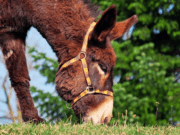How to get your dog ready for her first winter
Winter is a season of the year associated with very cold temperatures, snow, and ice. whether your pet is warm-blooded or cold-blooded, you need to prepare your pet for the cold temperatures especially if it’s their first time. these are winter pet care tips to help you navigate through winter with little stress
You can do the following things to get your dog ready for their first winter:
1. Keep them warm: Ensure that your dog has a comfortable place to sleep, whether it’s inside or in a heated crate. Think about buying them a coat or sweater to wear outside.
2. Guard their paws: Your dog’s paws might be damaged by snow and ice. On your driveway and walks, think about applying pet-friendly ice melt. When your dog enters the house, clean their paws with a warm cloth to eliminate any salt or chemicals.
4. Keep them hydrated: Dogs can become dehydrated in the winter, especially if they spend a lot of time outside, just like humans can. Make sure they always have access to fresh water.
5. Keep them active: Exercise is vital to your dog’s general health and can aid in keeping them warm during the winter. To keep them active, take them for walks or play with them inside.
6. Trim their coat: To keep your dog comfortable in the winter if they have a lengthy coat, you might want to consider having it cut. A shorter coat will be simpler to maintain and brush, and it will keep your dog warmer by retaining body heat.
7. Gradually adapt them to the cold: If your dog is unaccustomed to the cold, introduce them to it by letting them spend progressively more time outside. They will have more time to get acclimated to the cold, which will help them avoid any issues.
How to handle transporting animals from Africa to their first winter
There are a few things you may do to help animals acclimate when you transport them from Africa to a place where they will encounter winter for the first time:
1. Progressively acclimatize the animals to the cold: If the animals are not acclimated to cold weather, acclimate them by keeping them in a cooler setting for brief periods of time and then gradually extending those amounts of time. They will have more time to get acclimated to the cold, which will help them avoid any issues.
2. Provide a refuge for them: Ensure that the animals have a warm, dry area to relax. This could be a heated barn or shed, as well as a room indoors with bedding made of straw or blankets.
3. Keep them warm: To keep the animals warm, think about giving them blankets, coats, or other warm bedding.
4. Protect their paws: Animal paws can be damaged by snow and ice. When ice forms on walks, use pet-friendly ice melt and wipe their paws with a warm cloth when they enter the house to eliminate any salt or chemicals.
5. Keep an eye out for hypothermia and frostbite symptoms: Hypothermia symptoms include shaking, drowsiness, and loss of coordination. Frostbite is characterized by pale or grey skin that feels cold to the touch and can affect the ears, tail, and paws.
6. Keep them hydrated: Ensure that the animals always have access to clean water. When the animals are spending a lot of time outside in the winter, dehydration can be an issue.
7. Keep them active: Exercise is crucial for the health of the animals as a whole and can assist in keeping them warm during the winter. To keep them active, encourage them to play and move around.
What to do if your pet is going through their first winter
There are a few things you can do to assist your pet to acclimate if this is their first winter:
Maintain their warmth: Ensure that your pet has a warm place to sleep, either inside or in a heated crate. Think about buying them a coat or sweater to wear outside.
2. Guard their paws: Ice and snow can be damaging to your pet’s paws. On your driveway and walks, think about using pet-friendly ice melt. To remove any salt or chemicals from your pet’s paws after they enter the house, wipe them with a warm towel.
3. Watch for hypothermia and frostbite symptoms: Symptoms of hypothermia include shivering, drowsiness, and loss of coordination. Frostbite is characterized by pale or grey skin that feels cold to the touch and can affect the ears, tail, and paws.
4. Keep them hydrated: Just like us, pets can become dehydrated in the winter, particularly if they spend a lot of time outdoors. Make sure they always have access to fresh water.
5. Keep them active: Exercise is crucial for the general health of your pet and can help them stay warm during the winter. To keep them active, take them for walks or play with them inside.

































